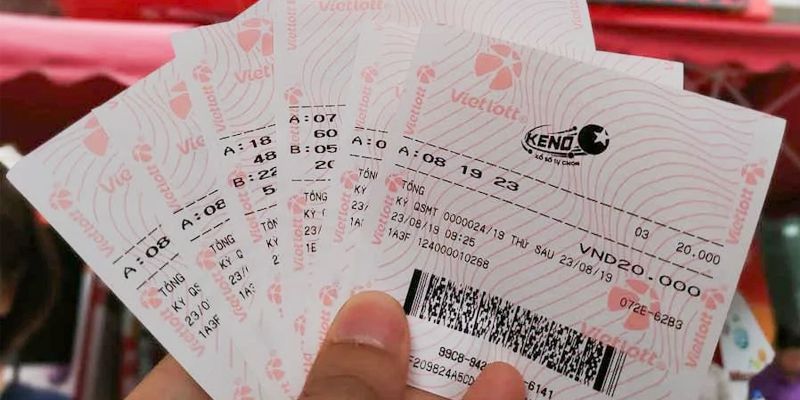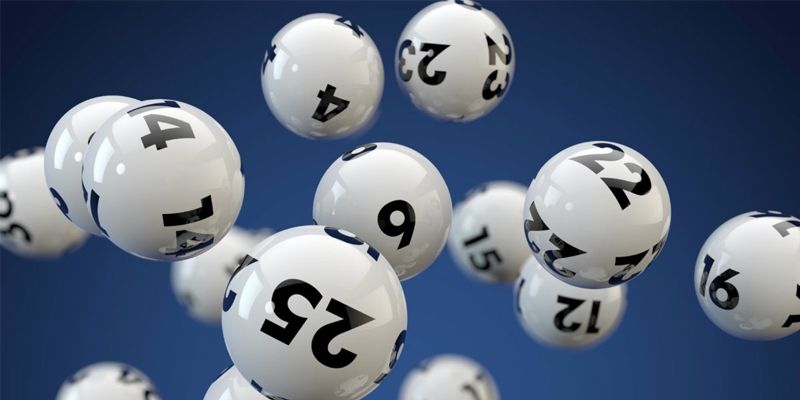The Keno Calculation Formula – Your Key to Winning Big
Keno is a popular lottery game that requires players to understand the rules and calculation formulas to achieve accurate results. If you’re wondering which Keno calculation formula is the most reliable, let’s explore some formulas that make it easy for you to win at Keno.
Understanding the Basics of Keno Tickets
Before diving into the Keno calculation formulas, let’s understand what Keno tickets are all about. Keno is a quick pick lottery product offered by the Philippine lottery company, Vietlott. Vietlott conducts 96 Keno draws every day, starting from 6 am to 10 pm, with each draw lasting about 10 minutes. Players can easily select their desired numbers and quickly check the winning results on their tickets.
Currently, Keno is distributed in two main types: Basic Keno Tickets and Supplementary Keno Tickets. Typically, both types of tickets can be printed on the same ticket, with information about the selected number set, the amount of money wagered, and the draw number. The basic betting amounts are usually 10k, 20k, 50k, 100k, 500k, 2000k, and similar amounts. According to statistics, Keno is a self-selected lottery type with a relatively high winning rate, with an average of 1 in 3 Keno tickets being a winner.

Top Keno Calculation Formulas You Should Know
According to experienced Keno players, although the Keno results are determined randomly, there is usually a specific formula that can be applied to calculate and predict the outcome. To master these Keno calculation formulas and choose the right Keno number set to increase your chances of winning, you need to carefully observe the numbers that appear in each draw and determine your own patterns.
1. Observe the Frequency of Number Occurrences
The first Keno calculation formula is to observe how frequently numbers appear. Typically, the winning numbers in recent draws are more likely to appear in the next draw compared to other numbers. (According to statistics, in 100 consecutive Keno draws, the repeated probability of winning numbers from the previous draw is 39%). Choose numbers that have a high frequency of occurrence in previous draws.
For example, if the number 38 has appeared frequently in previous draws, you can add it to your list of selected numbers for the next draw.

2. Nurture a Series of Numbers Over Multiple Draws
Another Keno calculation formula that many players apply is to nurture a series of numbers over multiple draws. Specifically, the numbers that are “nurtured” are those that have appeared less frequently in the last 30 winning draws. By continuously monitoring and betting on these numbers when purchasing tickets, your chances of winning can be higher than picking at random. According to experienced Keno players, these numbers often appear after 6-7 draws.
However, nurturing numbers that appear less frequently requires players to have experience and a good understanding of Keno’s playing rules. Additionally, playing Keno using this method also requires a significant amount of capital. Therefore, if you’re a new player, it’s important to carefully consider before deciding to apply this strategy.
3. Select Sequential Number Sets
Typically, by observing the high-winning results in Keno draws, you may notice a trend of consecutive numbers in the winning number set. For example, natural numbers with a sequential pattern like 19, 20, 21… or 60, 61… tend to appear frequently. This is an important factor to consider when choosing numbers to play Keno.
4. Apply for Each Even/Odd or Big/Small Supplementary Keno Ticket
Depending on the type of ticket, you can apply the most suitable Keno calculation formula. Here are some specific examples:
For even and odd 11-12 playing: Typically, every 3 draws, there will be 1 even 11-12 or odd 11-12 draw. To take advantage of this strategy, observe consecutive draws in a day. If there are 2 consecutive draws without an even 11-12 or odd 11-12 result, you can participate in this supplementary betting method on the 3rd draw to increase your chances of winning.
For big/small supplementary playing: On average, for every 5 draws, there will be 1 big/small draw. To increase your chances of winning, observe consecutive draws in a day. If there are 4 consecutive draws without a big/small result for the 5th draw, you can immediately participate in the big/small draw, which can increase your chances of winning.
For even and even 11-12 playing: According to the Keno calculation formula, on average, every 10 draws will have 4 even draws. If you choose to play this type of ticket and notice 2 consecutive draws without an even result, you can buy 2 even and even 11-12 tickets on the 3rd draw. This increases your chances of winning when the results return with more than 15 even numbers.
For a combination of big/small and even playing: Based on the Keno calculation formula, every 10 draws will have 1 even draw, and every 5 draws will have 1 big/small draw. Therefore, if you observe 9 consecutive draws without an even result, you can buy an even ticket on the 10th draw. Or, if the previous 4 draws do not have a big/small result, you can apply the strategy of playing 2 tickets at the same time to increase your chances of winning and achieve your daily goals.
Important Considerations for Keno Calculation Formulas
The Keno calculation formulas and playing strategies mentioned are for reference purposes only. To find the most effective formula and playing method, it’s important to continuously observe and analyze the winning numbers throughout the day. By doing this, you can accumulate experience and determine the most suitable Keno playing strategy for yourself.
In addition to the mentioned Keno calculation formulas, experienced Keno players also share that there are specific time periods in a day when Keno numbers tend to appear according to certain rules. However, these rules usually last for about 1-2 hours and then transition to new rules.
Therefore, to optimize your chances of winning, it’s essential to spend time observing the draw results and have keen deductive skills to find suitable rules for your playing strategy.

Conclusion
The Keno calculation formulas provided by the experts at luckycola7.ph are thoroughly analyzed and shared in detail. We hope that this information is important and provides a solid foundation for players to participate in Keno effectively and achieve remarkable wins.

